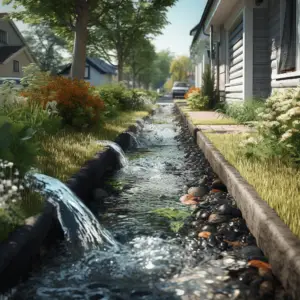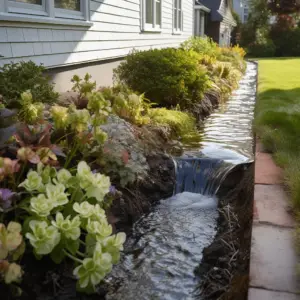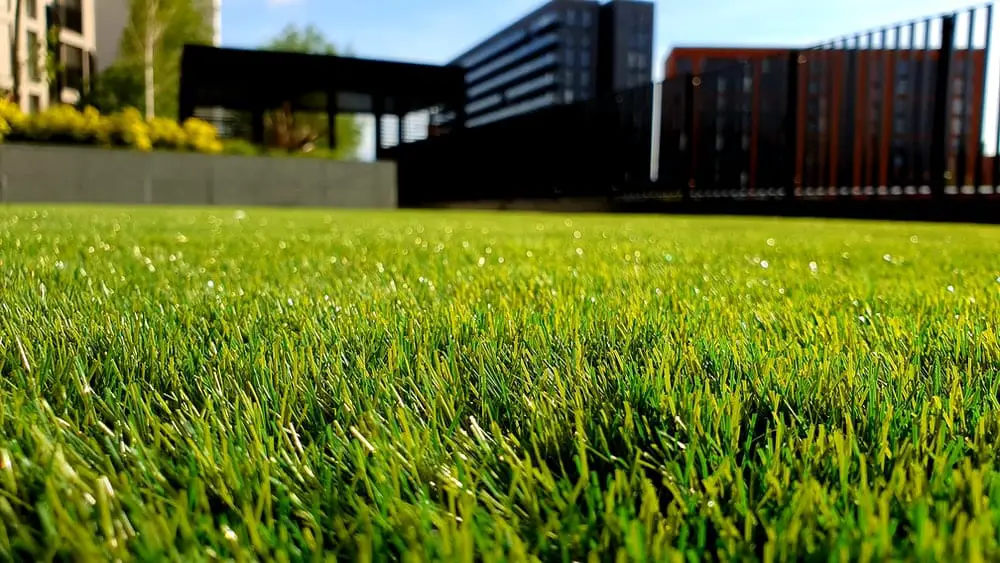Water Runoff Issues, is one of the most essential elements for life to thrive but conversely, water possesses a destructive capacity of colossal proportion. Granted, water runoff is not a catastrophic event but any decently maintained lawn or yard will fall into complete ruin if water runoff is not addressed properly and in the long term, could cause serious problems that cost a handsome sum to fix.Water runoff from a neighbor’s yard is frustrating to deal with considering this is a problem emanating from the actions or inactions of another. Nevertheless, it must be dealt with.
Before solving the problem, you must know the cause as this will inform your course of action going forward. Some of the reasons for water runoff from your neighbor’s yard include:
- Heavy rainfall
- Yard alterations by your neighbors
- Your house is lower than other houses on a slope
Table of Contents
How to stop water runoff from neighbor’s yard

Depending on what is causing water runoff from your neighbor’s property, you can implement any one of the solutions below.
Construct a Berm
A berm is basically a mound of soil heaped and shaped in a semi-circular fashion that prevents water from flowing to a particular area and guiding it away to a different place altogether.
This is a simple way of draining away water and protecting your yard from soaking with water runoff that will cause damage to your lawn.
Berms are typically quite effective despite being very simple to make.
There are some factors you must keep in mind when making your berm, ensuring you build the most optimal berm for your property
- Ensure your berm does not direct water to yet another neighbor’s property or to another part of your property where it can puddle or cause other damage. Mapping where you intend to direct your water and how smoothly the water will flow is critical.
- Do not make your berm too steep as this will encourage soil erosion.
- Do not raise your berm too high. Given that it is still just a mound of soil, the higher it goes the less stable it will be. If you need a high berm, start small and allow the soil to compact itself over some time then add more soil, shape it and give this fresh layer time to settle and compact together with the previous mold.
- The shape, more than the height of your berm is the critical factor. Semicircular berms more than straight berms are better.
- Use clay soil at the base of your berm. Clay is highly absorbent and once saturated forms a harder mound that will allow runoff to flow easily along. Loam soils that we use for planting are softer and will be more prone to falling apart if the runoff persists. Use the loam on top for planting and cover up with generous amounts of mulch to prevent too much water evaporation.
- Consider buffering the base of your berm with rocks as fortification.
- Consider growing grass or plants on your berm. Aside from balancing out your berm with the rest of the natural vegetation of your yard. Plant roots hold the soil together compacting it even further and stabilizing your berm.
- Plants that thrive in drier conditions tend to have even deeper robust roots and need little maintenance. Find out which species are available to you and decorate your berm with these.
Install a Dry Well
In areas where flooding and water runoff tend to be frequent and more severe, a dry well can solve the problem.
This involves quite a bit of work and is best done by a professional. When installed properly,
a dry well lasts years with minimal maintenance.
Installing a dry well involves digging a hole and placing tanks where water can collect temporarily before it releases through perforations and gets absorbed into the ground.
This stops water from pooling into puddles and ruining your yard.
Installation must take into consideration the presence of debris in runoff which could block the pipe that directs water into the tank or create sediment in the tank affecting the efficiency of the tank.
This is why it is advisable to hire a landscaper to install a dry well rather than doing it yourself.
Construct a French Drain
A French drain is fairly complex to do on your own as well and it is best to hire a professional.
This type of trench is dug fairly deep and lined with a type of drainage fabric, then gravel.
A drainage pipe with perforations is placed along the length of the trench and more gravel is added on top of the pipe.
The fabric is wrapped around the pipe and the gravel and soil is put on top to fill up the trench.
The drainage fabric and the gravel prevent debris from getting into the pipe and clogging it.
You can plant grass or any plants of your choice on top.
French drains are very effective for rerouting large amounts of water and are friendly to the environment as well.
Dig a Trench
Digging a simple trench or swale to intercept the water and direct it from your neighbor’s yard away from yours can do the trick.
This requires no expertise and will not take up much time.
A simple trench will only work for moderate amounts of runoff and will need to be redone from time to time or when the season calls for it.
If the runoff is not severe and does not recur, a seasonal ditch like this is very effective.
Consult Your Neighbor

In the event that your neighbor has caused runoff to drain onto your property by making alterations that affect drainage, appraise your neighbor on the issue and find a solution that works for both of you.
Most people operate within reason and likely have no idea how the changes on their property negatively impact the adjoining properties when they make them. If your neighbor is uncooperative, it is advisable to seek legal redress to resolve the issue.
Depending on what is causing the runoff, where on the yard the runoff is occurring and how much of it is flowing, one of the above solutions should provide a full-proof way to stop water runoff from your neighbor’s yard.


